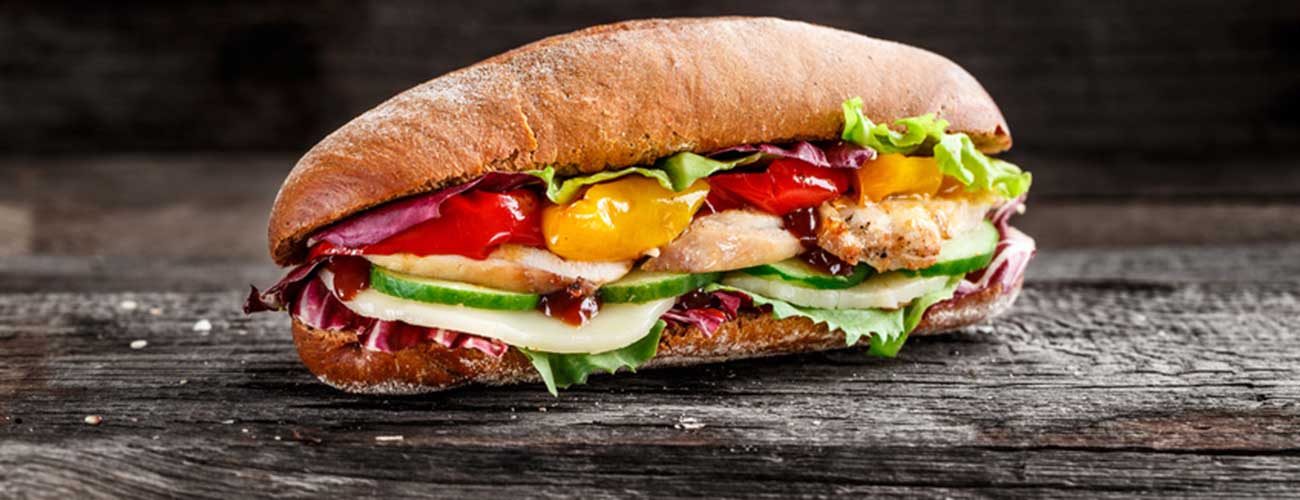Last week, after writing about a few regional language variations, we heard from a lot of readers with their own favorites.
The funniest one may have been from Michael Pollak, an editor at The New York Times, who tweeted:
@meperl And if you date a British guy and he says he’ll knock you up about 7, don’t be alarmed.
— Michael Pollak (@tboid23) January 19, 2016
In British English, to “knock you up” simply means knock on your door, not what it means here. (If you don’t know, ask your mother.)
The most ubiquitous ones, though, had to do with what you call the concoction that is two pieces of bread with foodstuffs in between.
Depending on where you live, it might be a “hero,” a “wedge,” a “sub,” a “grinder,” a “torpedo,” a “po’ boy,” a “Dagwood,” etc.
Let’s start with the provenance, though, since this is a column about language, not food. Most people know it’s named after the Earl of Sandwich, though many don’t know why. The Oxford English Dictionary says this: “Said to be named after John Montagu, 4th Earl of Sandwich (1718–1792), who once spent twenty-four hours at the gaming-table without other refreshment than some slices of cold beef placed between slices of toast.” A “sandwich” was a poor man’s meal, not something an earl should be having as a repast (unless he were losing heavily). A bit after its original use in 1762, it became more common for a light meal, almost a snack.
Even before that, though, the word “sandwich” had been used to describe a cord of some kind, the OED says. It also traces to the town of Sandwich, in Kent, whose name means “a center of trade on sand.”
But back to food. “Sandwich” is the broadest term for the bread-based, handheld food, but we start diverting, regionally speaking, when referring to a “sandwich” that is a long, probably crusty piece of bread, sliced open to be stuffed.
The Subway chain has made the “sub” sandwich recognizable worldwide, though its origins are disputed. It’s clear that “sub” is short for “submarine,” but the first use of that word to describe a long, tubelike underwater vessel is from 1828, according to the OED, and the “submarine” sandwich didn’t really appear until 70 years later or so.
The non-maritime “submarine” probably has its origin in something called an “Italian sandwich,” made, appropriately enough, on a long, crusty Italian loaf. It’s from the Northeast, though whether it’s specifically from Maine, as some sources say, is disputed. One story is that an Italian grocer in New Jersey started calling his long sandwiches “submarines” after he saw the hull of a wrecked sub in 1927.
“Hoagie” apparently originated not far west of there, in the Philadelphia area. Depending on which source you read, it may have been coined in the 1920s, during World War II, or when the Gilbert and Sullivan opera HMS Pinafore came to Philadelphia in 1879. Never mind: It’s really the same thing as an “Italian sandwich.” A true “hoagie,” like a true “Italian sandwich,” must have some sort of an oil- and vinegar-based dressing to be legit.
Similar disputes arise over the term “grinder,” which first appeared in American dictionaries in 1954. American Speech magazine said in 1967 that a “grinder” was so named because “the consumer must be able to grind the diverse ingredients in his mouth.” In the Philadelphia area, or so it said, the only difference between a “hoagie” and “grinder” is that the “grinder” is toasted and may lack lettuce.
But in the Midwest, you might have a “guinea grinder,” a politically incorrect name for a sandwich that is usually partly Italian sausage, partly ground beef. It’s a specialty at the Iowa State Fair.
In the suburbs of New York City, you might find “wedges,” though there are pockets of regional “wedges” in the Midwest as well. It’s still at heart (and stomach) that “Italian sandwich.”
In Louisiana, that same sandwich might be a “po’ boy,” though the bread is more likely to be French than Italian, and it’s unlikely to require any Italian dressing. The most popular explanation for that name is that free sandwiches were served to strikers by a New Orleans restaurant in 1929. The strikers were being called “poor boys,” pronounced with a New Orleans accent, and soon the sandwiches were being called them as well. If you want to go more traditional, you probably want a “muffuletta,” which is usually made on a large, round Italian or Sicilian bread, which is then cut into, um, “wedges.”
As before, you need to be careful what you ask for. In many places, if you ask for a “hero,” depending on how you pronounce it, you risk getting a “gyro.” Not the same thing at all, but nothing to turn your nose up at, either.
Merrill Perlman managed copy desks across the newsroom at the New York Times, where she worked for twenty-five years. Follow her on Twitter at @meperl.

